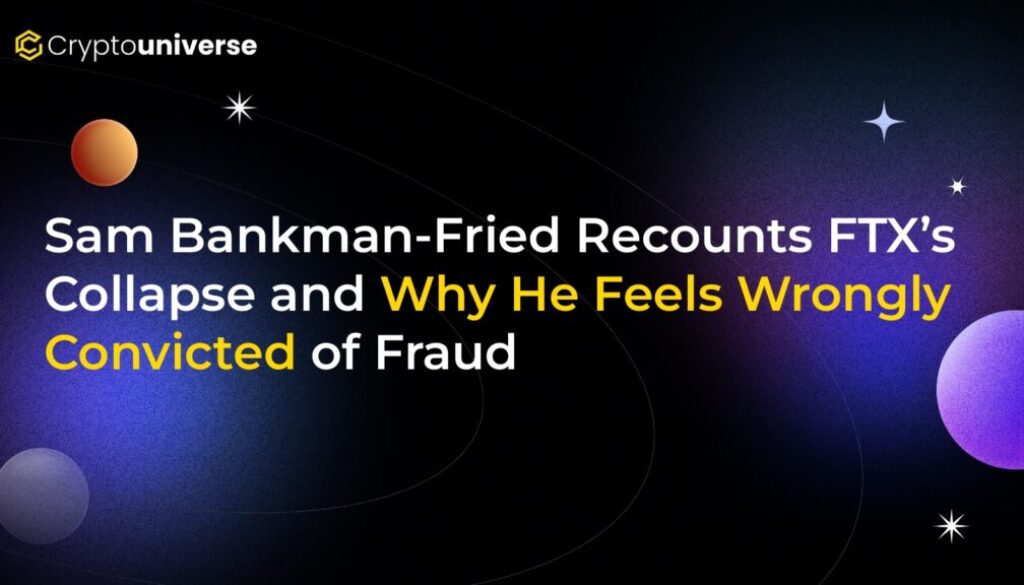Sam Bankman-Fried Recounts FTX’s Collapse and Why He Feels Wrongly Convicted of Fraud

The Rise and Fall of the Crypto King
Not long ago, Sam Bankman-Fried, widely known as SBF, was the face of the cryptocurrency world. Hailed as a visionary and the “crypto king,” he helmed FTX, a digital asset exchange that soared to a valuation of $32 billion. But in November 2022, the empire crumbled with shocking speed. In a matter of days, the platform froze, and millions of customers worldwide found themselves locked out of their accounts, their life savings vanishing into a digital black hole.
The chaos was felt by users and employees alike. Investors like Tareq Morad from Canada watched in disbelief as their withdrawal requests were endlessly denied. “I tried to withdraw an amount, you know, and it would spin and say, your, your withdrawal is pending,” he recounted. “I remember myself doing that around 7, 8 o’clock at night, checking back, going to look: Okay, did it go through? Did it go through? No. No. No.”
Inside FTX, the situation was just as dire. A sense of panic gripped the company as the reality of the situation set in. Caroline Papadopoulos, who was part of FTX’s accounting leadership, described the internal meltdown: “All that we were told was there’s been a run on the bank and, somehow, money is missing and we don’t know who to trust.”
A View from a Prison Cell: SBF’s Side of the Story
Now, speaking from prison after his conviction on multiple counts of fraud and money laundering, Sam Bankman-Fried is telling his version of events. In recent interviews, he has begun to recount the frantic week of FTX’s collapse and explain
SBF’s defense centers on the argument that there was no intent to defraud customers. He maintains that poor risk management, commingled funds between FTX and its sister trading firm Alameda Research, and a series of disastrous market events created a perfect storm. In his view, the missing billions were not stolen, but lost in a cascade of bad bets and an inability to meet a sudden surge of withdrawal requests. He argues that if he had been given a few more weeks, he could have raised the necessary capital to make customers whole, framing the entire ordeal as a solvency issue, not a deliberate heist.
The Aftermath: A Billion-Dollar Cleanup
This narrative stands in stark contrast to the one presented by the team that took over the wreckage of his company. When veteran insolvency expert John J. Ray III was appointed CEO of the FTX estate, his initial court declaration painted a picture of corporate failure unlike anything he had ever seen—and he oversaw the liquidation of Enron.
“Never in my career have I seen such a complete failure of corporate controls and such a complete absence of trustworthy financial information as occurred here,” Ray stated in his filing.
The subsequent bankruptcy has become one of the most complex and expensive in history, with legal and administrative fees approaching an astonishing $1 billion. The primary goal of the bankruptcy estate has been to claw back assets and eventually return funds to the millions of creditors left in the lurch. This painstaking process involves untangling a web of convoluted transactions, questionable acquisitions, and lavish spending that characterized SBF’s tenure.
Two Narratives, One Verdict
While SBF continues to plead his case from behind bars, a jury has already delivered its verdict. The prosecution successfully argued that the collapse was not just a case of mismanagement. They presented evidence showing that SBF intentionally directed the misappropriation of billions in FTX customer funds to fuel risky ventures at Alameda, make speculative investments, fund political donations, and purchase luxury real estate.
The core of the criminal indictment focused on charges of wire fraud, securities fraud, and money laundering, alleging a deliberate and sustained deception of customers and investors. Independent examiner reports commissioned during the bankruptcy have also scrutinized the company’s operations, questioning everything from the role of law firm Sullivan & Cromwell to the valuation of FTX’s native FTT token, which was allegedly used to inflate the company’s balance sheet.
Ultimately, the story of FTX’s collapse is a tale of two competing realities. One is of a tragic but unintentional business failure, as told by its founder. The other is a story of calculated deception and greed that led to one of the largest financial frauds in recent memory. For the millions of victims still waiting for answers and restitution, the distinction is everything.


